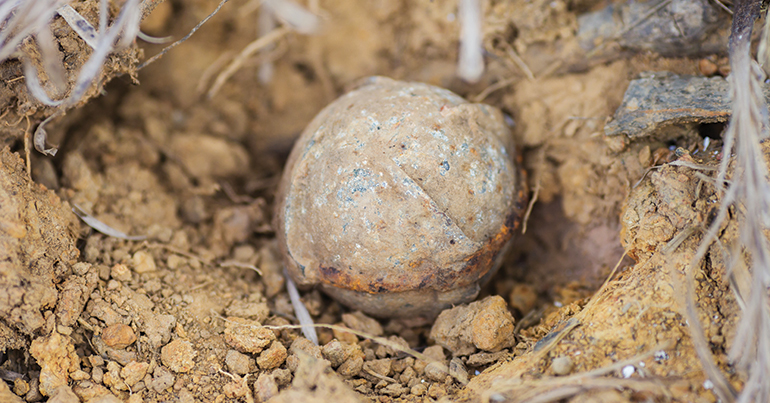Tell us a bit about what UXO survey and clearance entails…
Because there is so much contamination in Laos, the first step is to find and map areas that are contaminated with unexploded ordnance (UXO). We do this through a process called “cluster munition remnants survey”, or CMRS. NPA teams visit a village and ask the local community for information on where UXOs might be, and then use metal detectors to do a rapid search of the area. This process allows us to produce a rough map outlining a “confirmed hazardous area”. We also collect socio-economic data that allows us to prioritise these areas for clearance – including the number of people who use land, what the land will be used for. Then, a clearance team will do a more precise search of that area and remove all UXOs they find. We follow clearance plans decided in coordination with local and national authorities.
What is the hardest part of your job?
Demining is a potentially dangerous activity. To ensure safety of personnel and local people during demining operations is a challenging task. As a national operations manager, I am responsible for overall safety of personnel, and I have to constantly work with my technical colleagues to improve demining methodology in order to avoid the risk of incident to personnel related to demining activities.
Why is this work important to Laos?
Although the war ended almost four decades ago, UXO still exists throughout large swathes of the country and many Lao people are killed and injured every year by unexploded munitions. UXO has a strong link to poverty and is also a significant impediment to development, as land must be cleared of the dangerous explosives before infrastructure can be built or farmers can safely access agricultural land. To combat this, Lao PDR was one of the first countries to sign up to the Convention on Cluster Munitions, an international treaty that bans the use of cluster munitions and helps reduce their impact in affected countries. By signing this treaty, the government of Laos committed to clearing land contaminated by cluster munitions and other UXO, to ensure the safety of all people in Laos. NPA, with the support of our donors in the US Department of State and the Norwegian Ministry of Foreign Affairs, is one of the organisations working to address this ongoing issue in order to support the government of Laos.

Does NPA have any way to map the cluster munitions that have been located and, if so, what kind of pattern has that revealed?
All cluster munitions our teams find are marked with a GPS, so we know the precise location of each item that is found. We generally find that cluster munitions fall in an oval shape, with more items found in the centre and the pattern gradually fading out towards the edges of the oval. We can call this pattern the “footprint” of the bomb. Quite often many footprints from individual bombs are merged together because the bombing was so intense, so not every footprint is recognisable.
Why does NPA use detectors rather than rats to locate UXOs, as some other organisations have begun doing in recent years? Are there any new or upcoming technologies that are promising for the future of demining?
Rats as well as other tools are considered a good asset for demining – but like anything else, they have advantages and limitations. NPA Laos is always searching for and testing new tools and methodologies in order to make our work more safe and more efficient. Handheld detectors are a standard tool for clearance in Laos; however, there are different tools that NPA [has used] for many years in different parts of the world, including different types of metal detectors, drones and explosive detection dogs. These tools and technologies, as well as many others, could be useful to significantly speed up the productivity of clearance work in Laos – [but they] need to be carefully trialled and tested to ensure they will work for the particular type of munitions found in Laos.
How did you get into this profession?
I applied for a demining job because I thought that it is interesting and that I could help other people. Although demining is dangerous, it is also challenging and exciting work. I realised that what me and my team did can save many people’s lives. So that made me want to learn more about demining and use my knowledge and skills to remove the danger from UXO so that people in the impacted area can live safely.


